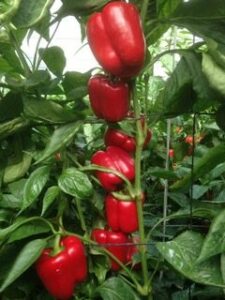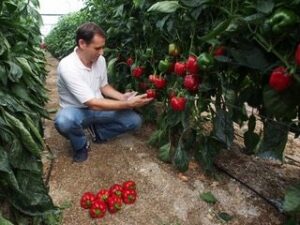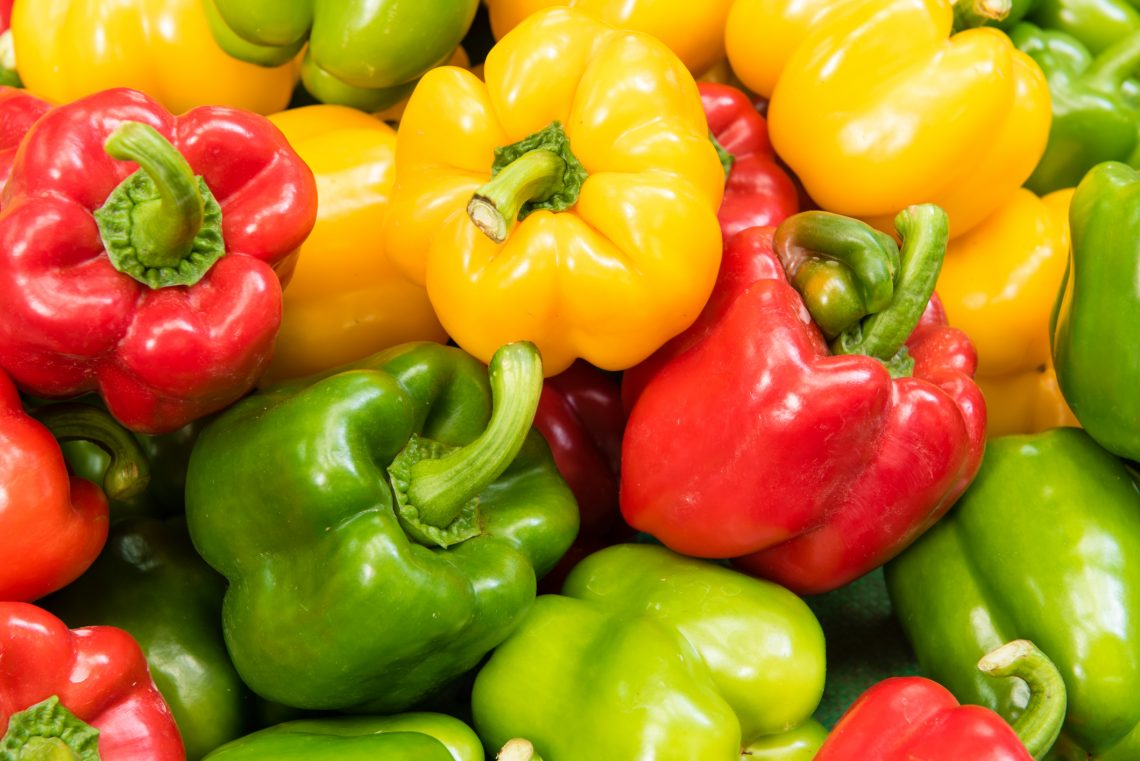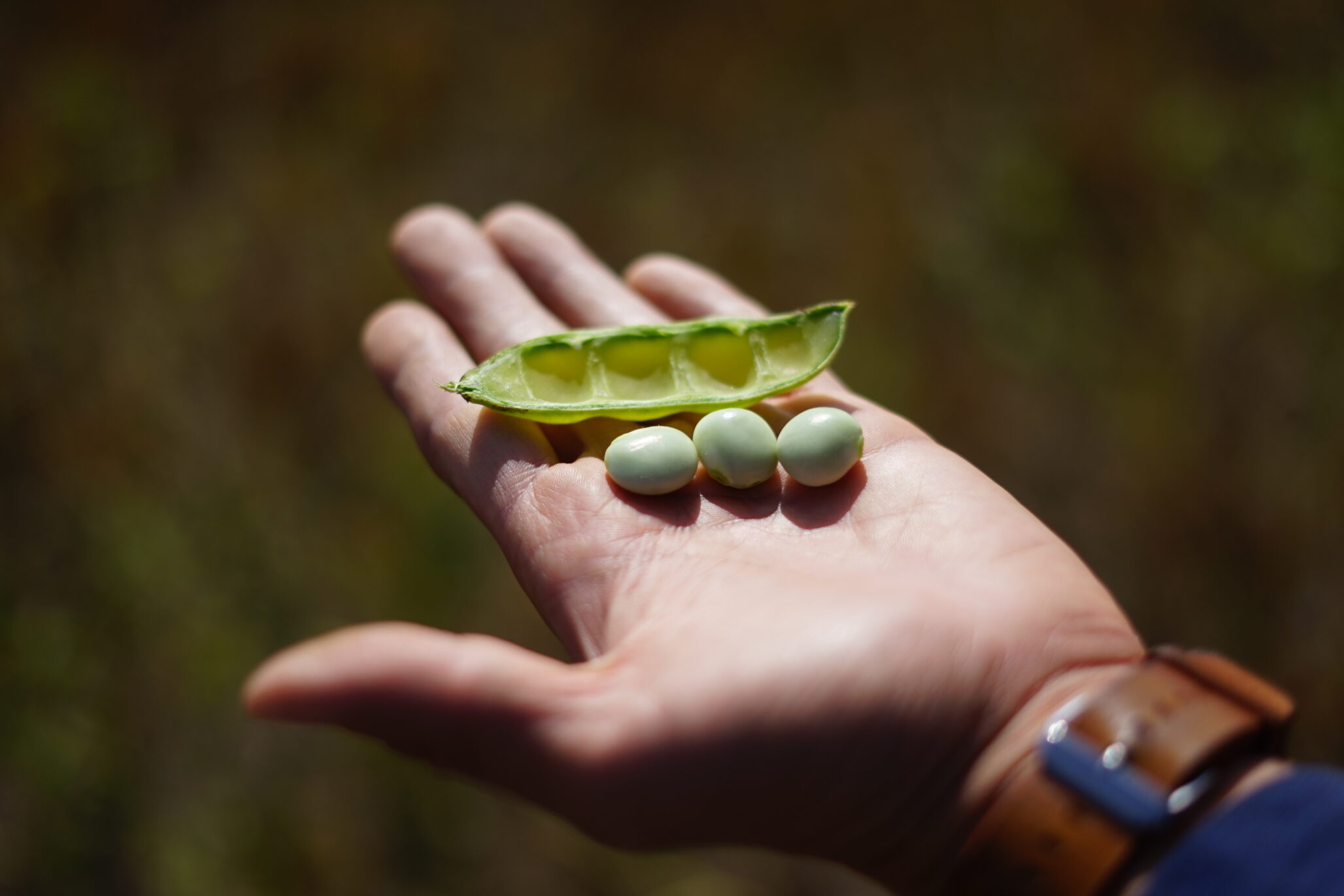Updates on sweet pepper breeding for yield, resistance and more, and what’s to come.
For our annual fruit and vegetable issue, leading sweet pepper breeders share the latest on breeding for yield and resistance to pests and disease, as well as challenges with securing genetic diversity and more. These top breeders also share their thoughts on innovations and future breeding directions.
The five industry experts are:
Bill McCarthy, Americas Sweet Pepper Breeder, Monsanto
Matthieu Nicolas, Global Breeding Lead for Peppers, Syngenta
Natalia Nagy, Global R&D Team Lead Peppers, Bayer
Ariadna Monroy, Sweet Pepper Breeder, H.M. Clause
Origins and Market Share

Today, China is the world’s largest pepper producer, followed by Mexico and Indonesia. The website ‘World’s Top Exports’ reports that global exports of sweet peppers and chili peppers totaled $5 billion USD during 2016, an average 14.7 percent increase over 2012. The site states that “Europe exported the highest dollar worth of peppers during 2016, with shipments valued at $2.5 billion (50.2 percent of total worldwide sales. In second place was North America at 35.2 percent while 10.6 percent of worldwide peppers shipments originated from Asian exporters.” Smaller percentages came from Africa, Latin America (excluding Mexico) and Oceania.
Sweet pepper is an increasing popular vegetable crop, available in several different types and colors. Please tell us about your breeding focus.
Bill McCarthy (BM): My primary focus over the past years has been to provide stable products that allow growers to more consistently harvest a marketable product. Darker green color, better fruit quality and better fruit uniformity have worked well for me. My true passion is creating products that allow growers to create a crop using less pesticides. Introducing hybrids with resistance to bacterial leaf spot and phytophthora capsici have been a very important in the more humid areas of North America. Allowing more production of fully colored peppers in open field conditions has also been successful for us.
Matthieu Nicolas (MN): The Syngenta pepper breeding R&D team is located in Spain, Netherlands, Israel, Mexico, US and Brazil. The breeding objectives are primarily focused at these major markets, but we also drive hard to serve other developing markets such as India, China, Mexico… We have narrowed our focus on blocky types for all ecologies (heated glasshouse, unheated plastic houses, open field dry, open field humid) and various elongated and conical types such as Elongated Bell and Dulce Italiano (plastic house) and Cascadura (open field).
Natalia Nagy (NN): Pepper is a crop that is growing in consumption and offering plenty of opportunities and diversity. Being relatively new in peppers we have a strong focus on indoor blocky peppers. This is the biggest market but also very competitive. As a result, our main presence is in Mexico. For the outdoor markets, our focus is on Lamuyo type which is mainly used for processing purposes.
Ariadna Monroy (AM): Pepper types usually are bred for different locations where consumers have different requirements such as taste, shape, flavor, uses. Cultural background and history have a lot of influence in what people eat and how they eat it. There a focus towards certain types depending on the size of the market and the location, e.g. Mexico, U.S., Europe, open field, greenhouse, etc.
In most crops, yield and resistance are paramount breeding targets. How is this in sweet pepper?
BM: In all of the different markets I’ve worked on, disease resistance has been used effectively to either increase yield, or to stabilize it. Many markets rely on specific types of resistance to compete and survive. The use of markers are allowing us to introduce new resistance faster than ever before and allowing us to combine multiple disease resistances.
NN: Many of the breeding efforts are the same for the different types of sweet peppers like yield and certain diseases. The difference is how yield manifests itself. In some market yield is represented by the amount of peppers and in others, it is measured by kg per m2, or by fruit weight and fruit dimensions. These parameters need to be kept in mind when improving yield. In general breeding increases yield about 1 percent per year.
AM: Yield is a compounded trait, and many factors such as number of fruits, size of the fruit, earliness, number of harvest, density etc. are involved in yield calculation (for what diseases and what factors play into yield). Quality has to be hand in hand with yield. Uniform size, color, shape, and texture facilitate the manipulation of the product. Homogeneous products are easier to manipulate, pack, transport, display on shelves or use in equipment for industry.
Which diseases are most important in your breeding work? Have there been any new diseases in sweet pepper in the past few years?
BM: In the humid areas, bacterial leaf spot has been a major issue for many years. Phytophthora capsici has been a major issue in Midwest/Eastern U.S. and is starting to appear more frequently in Southeastern U.S. areas as well. Tomato spotted wilt virus continues to be an issue is certain areas.
MN: Our breeding projects for resistance against many diseases and pests are very long term, sometimes taking more than 15 years, between the initial cross with the exotic resistant material and the released commercial variety. This is why we are very proud that most of our future varieties will be resistant to pests such as Nematodes (Meloidogyne sp.) and Powdery mildew (Leveilulla taurica), with native resistance traits coming from wild peppers. The list of resistances we are addressing is long: Phytophtora, Tospoviruses, Tobamoviruses, Xanthomonas and many more. In addition, we are just launching a white fly resistant variety. Breeding for insect resistance is a battle fought on two fronts: providing resistance against the pest itself (white flies, thrips, caterpillars) to reduce virus pressure as the pest act as vectors for the virus, and creating resistance to the virus itself as well.
NN: Our breeding efforts go for the Tobamovirus complex, Tomato Spotted Wilt Virus, nematodes with special attention to Meloidogyne enterolobii. Phytophthora is another disease that requires research and breeding efforts, and next, Xanthomonas.
AM: Disease package depends on location. Some environments are more conductive than others for certain diseases. The East Coast U.S., with high humidity levels, is more conductive for bacterial problems, dry locations are more susceptible to host viruses and insects, and locations with heavy rain will present more problems in the roots of the plants.
What is the biggest challenge for a breeder when developing a new sweet pepper variety?

NN: A breeder needs to combine external market information originating from various channels like plant raisers, growers, chain and the end consumer with internal vision on how the market will develop. The breeder has to have good relationships with the internal marketing and sales organization to hear developments outside the company.
AM: Introducing resistance genes for new pathogens or pests. Usually only wild materials have these unique sets of genes, along with many deleterious genes.
Do you find that you have sufficient access to new germplasm, or has this been made more difficult because of the new regulations on access and benefit sharing?
BM: Monsanto fully supports the aims of the Convention on Biological Diversity, and our policies and procedures for germplasm acquisition, use and sharing of externally-acquired material are in full compliance with the requirements and obligations under access and benefit sharing laws. Nevertheless, further guidance and clarity on various issues (such as clear definition of genetic resources and R&D within scope) need to be provided by the regulators or national authorities in various countries. Therefore, Monsanto supports cooperative efforts on the part of the industry and regulatory agencies to ensure that the pathway to compliance is clear, simple and as non-disruptive as possible.
NN: Access to new germplasm is indeed becoming more and more difficult due to new regulations. The Nagoya Protocol is putting pressure on the parties of the Convention on Biological Diversity to create more clarity on national access and benefit-sharing regulations. This means we have to comply with an increasing number of national regulations, which quite often do not take into account the specifics of the plant breeding sector, where many genetic resources are used to create new genetic resources. We especially struggle in those cases where the scope of the regulations is expanded beyond wild plants and landraces, and countries claim sovereign rights over commercial varieties that were developed by private breeding companies.
MN: Innovation is the core motivation of every breeder and access to genetic diversity is key for innovation. This has never been a blocker for us, as we have large internal wild collections, and also access to national gene banks, but we are eager to see clear access and sharing guidelines implemented.
AM: It’s more and more difficult every day with the new regulations and patents. We look for public banks. And companies are now collaborating more, interchanging commercial hybrids.
What innovations (technological, genetic, molecular etc.) are in the pipeline in sweet pepper breeding?
BM: The use of molecular markers is definitely helping us combine traits faster and more efficiently than in the past. Expect to see more hybrids with multiple disease resistances.
Markers are also allowing us to more quickly fix specific disease resistances that in turn allows for more time and effort on selection of traits associated with flavour, eating ability, quality and appearance. I think you will see a greater range of cutting-edge disease resistance in more of the smaller speciality pepper segments. More coloured bell products from open field production may appear as more Americans gain an appreciation for the health benefits and enhanced flavour of coloured peppers.
MN: New colors, new shapes, new tastes, higher digestibility are some examples for our future diversification pipeline. We recently released the first seedless snack pepper with enhanced taste and we intend to follow up with a full product line (red, orange, yellow, green) to entertain our consumers.
AM: We are working on developing several molecular markers for different traits related to disease resistance, yield and quality. Trying to introduce a robust resistance package helps the grower to reduce chemical applications which reduces their costs. Also, hybrids with ample adaptability facilitate grower production practices, reducing their cost.












